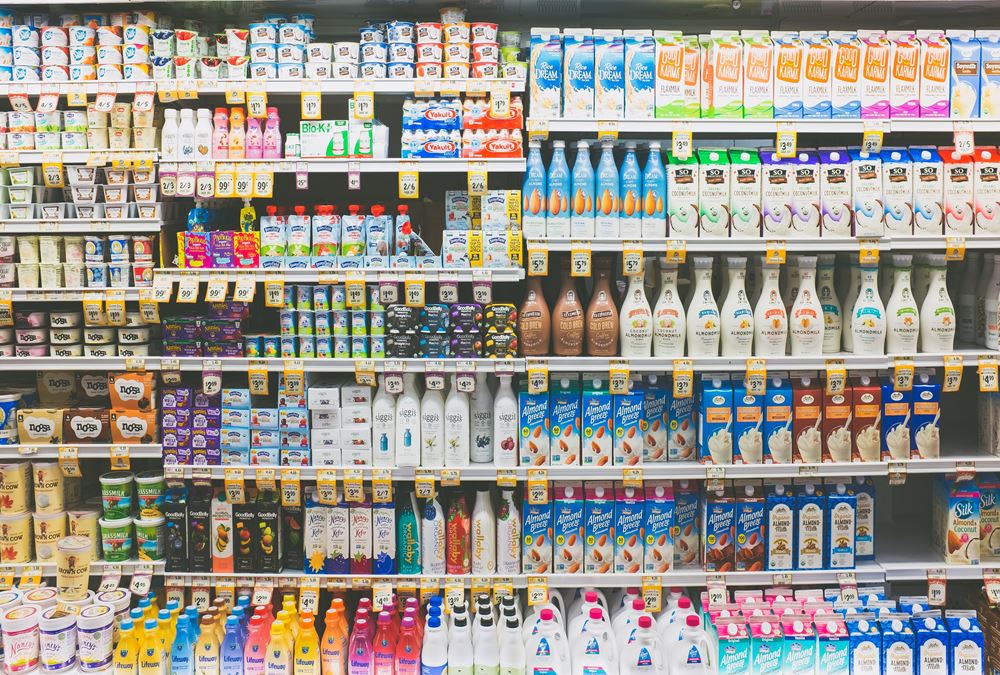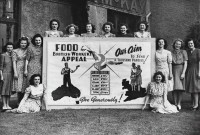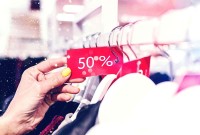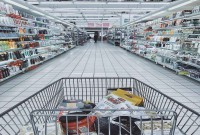- Home
- Business Processes
- Industry Knowledge
- Aerospace Industry
- Automotive Industry
- Banking Domain
- BFSI Industry
- Consumer/ FMCG Industry
- Chemicals Industry
- Engineering & Construction
- Energy Industry
- Education Domain
- Finance Domain
- Hospitality Domain
- Healthcare Industry
- Insurance Domain
- Retail Industry
- Travel and Tourism Domain
- Telecom Industry
- Leadership Skills
- eLearning
- Home
- Domain Knowledge
- Consumer/ FMCG Industry
- Fast Moving Consumer Goods
Fast Moving Consumer Goods
FMCG or consumer packaged goods (CPG) are products that are sold quickly and at relatively low cost, examples include non-durable goods such as soft drinks, toiletries, and grocery items. They generally sell in large quantities, so the cumulative profit on such products can be substantial and these industries often operate on thin margins.
Nondurable goods are consumed in less than three years and have short lifespans. Examples of nondurable goods include food and drinks. These goods are useful for less than 3 years, or pure services which are consumed instantaneously as they are produced.
The term FMCG refers to those retail goods that are generally replaced or fully used up over a short period of days, weeks, or months, and within one year. This contrasts with durable goods or major appliances such as kitchen appliances, which are generally replaced over a period of several years.
Examples of FMCG Goods
Some fast-moving consumer goods are highly perishable, such as meat, dairy products, baked goods, fruits, and vegetables. Sales of FMCG are usually affected by discounts being offered by the stores, and by holidays and other seasonal periods. Given below are the key categories in which FMCG goods can be classified:
- Baked goods such as cookies.
- A chocolate bar and candies.
- Frozen food such as ice-cream.
- Ready to make and ready to eat foods like chips.
- Packaged beverages like bottled water and orange juice.
- Processed foods like breakfast cereals.
- Alcoholic Beverages
- Cleaning Products
- Clothing & Apparel
- Cosmetics & Personal Care
- Food & Nutrition
- Furniture, Furnishings & Household Items
- Home Improvement & Gardening
- Non-alcoholic Beverages
- Pets & Animal Supplies
- Tobacco
- Toys
Characteristics of FMCG Goods:
People do not spend too much time while purchasing FMCG products. A quick buying decision is the beauty of the FMCG product. People do not think too much while purchasing these products. This industry also gives a huge opportunity for employment. Large numbers of retailers, wholesalers, stockiest, transporters, distributors or warehousing, and logistics give a huge opportunity for employment. The following are the main characteristics of FMCGs:
From the consumer perspective
Most of these fast-moving consumer goods have a short shelf life, either because of high consumer demand or because the product deteriorates rapidly. Seasons and holidays influence their sales. For maximum efficiency, the logistics and distribution systems often require secondary and tertiary packing.
- Frequent purchases
- Low engagement (little or no effort to choose the item)
- Low prices
- Short shelf life
- Rapid consumption
- Price comparison over online purchase by the customer
From the marketer perspective
FMCG product touches every aspect of human life. These products are frequently consumed by all sections of the society and a considerable portion of their income is spent on these goods. Apart from this, the sector is one of the important contributors to the economy. This sector has shown extraordinary growth over the past few years, in fact, it has registered growth during the recession period also. The future for the FMCG sector is very promising due to its inherent capacity and favorable changes in the environment. From a marketer perspective, this industry offers very high volumes and quick inventory turnarounds.
- High volumes
- Low contribution margins
- Extensive distribution
- High inventory turnover
The fast-moving consumer goods (FMCG) sector is the 4th largest sector in the Indian economy with Household and Personal Care accounting for 50 percent of FMCG sales in India. Growing awareness, easier access, and changing lifestyles have been the key growth drivers for the sector. The urban segment (accounts for a revenue share of around 60 percent) is the largest contributor to the overall revenue generated by the FMCG sector in India and recorded a market size of around US$ 29.4 billion in 2016-17. However, in the last few years, the FMCG market has grown at a faster pace in rural India compared with urban India. Semi-urban and rural segments are growing at a rapid pace and FMCG products account for 50 percent of total rural spending.
Related Links
You May Also Like
-
Retailing is the combination of activities involved in selling or renting consumer goods and services directly to ultimate consumers for their personal or household use. In addition to selling, retailing includes such diverse activities as, buying, advertising, data processing, and maintaining inventory. This article explains the meaning of retail and its etymology. Understand the meaning and constituents of the retail industry and the role it plays in the economy of any nation.
-
Business Dynamics of Consumer Industry
The consumer goods industry is impacted by many dynamics like economic considerations, product considerations, price considerations that impact consumer buying choices. Advertisements, branding, marketing, variety of goods, and technology are the main drivers. Manufactures, retailers, warehousing, and logistics are all part of the supply chain for the consumer goods industry.
-
Retail Industry Sectors: Types of Retail
A marketplace is a location where goods and services are exchanged. The traditional market square is a city square where traders set up stalls and buyers browse the merchandise. Now retail goods are generally sold in a number of different establishments. Convenience Stores, specialty stores, department stores, supermarkets & hypermarkets, discount stores, multichannel stores are some models used by the retail industry to provide goods to end customers.
-
Retail Industry – Drivers & Dynamics
To succeed in the retail sector, retailers must offer compelling value propositions and be responsive to market dynamics. The continued rise of e-commerce has altered the dynamics of the retail industry in such a way that has forced retailers to drastically reallocate their resources to multi-channel strategies. This article focuses on retail industry drivers and dynamics that provide the reader with a basic understanding of the factors that influence this trade. Understand the business drivers and dynamics of retail industry
-
Retail Industry - Business Model
A retail business model articulates how a retailer creates value for its customers and appropriates value from the markets. In retail, a business model would dictate the product and/or services offered by the retailer, the pricing policy that he adopts. Many different types of retail establishments exist, and, the overall industry has seen a significant blurring of the boundaries that separated the wide range of retail businesses. Understand the key business models adopted by the retail industry. Understand the distinctive ways that retail industry players use to reach to the end consumer.
-
Markets are continuously changing and to understand the dynamics of any industry it is important to understand what is happening and how the industry market players see the future for the industry. In this article, we will discuss the recent trends witnessed by the retail sector. This document provides insights into major trends identified for the retail sector.
-
Challenges in Consumer Goods Industry
There are tens of thousands of general consumer products manufacturers in the United States. They compete to develop the best products at the most affordable price for the greatest number of consumers. Challenges for these organizations include meeting the changing demands of customers, maneuvering through a consolidating market, and executing strategies to grow profitably.
-
Retail Industry: Current Challenges
Today consumers are choosing multichannel buying experiences and expect that to be a seamless experience. To attract customer loyalty, retailers need to provide an experience that stands out from others. Learn the challenges faced by the retail sector today. Multi-channel sale avenues, changing consumer behavior, technological advances, rising competition, rising frauds, and supply chain management are some of them that require immediate attention.
-
The consumer goods sector is a category of stocks and companies that relate to items purchased by individuals and households rather than by manufacturers and industries. These companies make and sell products that are intended for direct use by the buyers for their own use and enjoyment. This sector includes companies involved with food production, packaged goods, clothing, beverages, automobiles, and electronics. Nestle, Procter & Gamble, and Pepsico are some of the world’s largest consumer goods companies in the world.
-
Retail Industry: Key Performance Metrics
You cannot manage what you do not measure and cannot measure what you do not define. Learn the key performance metrics for the retail industry like Sales per square foot, Gross margins return on investment, Average transaction value, Customer retention, Conversion rate, Foot traffic, and digital traffic and Inventory turnover, etc. These metrics are used across the globe by key industry players to track and improve their performance.
Explore Our Free Training Articles or
Sign Up to Start With Our eLearning Courses

About Us
Learning
© 2023 TechnoFunc, All Rights Reserved









